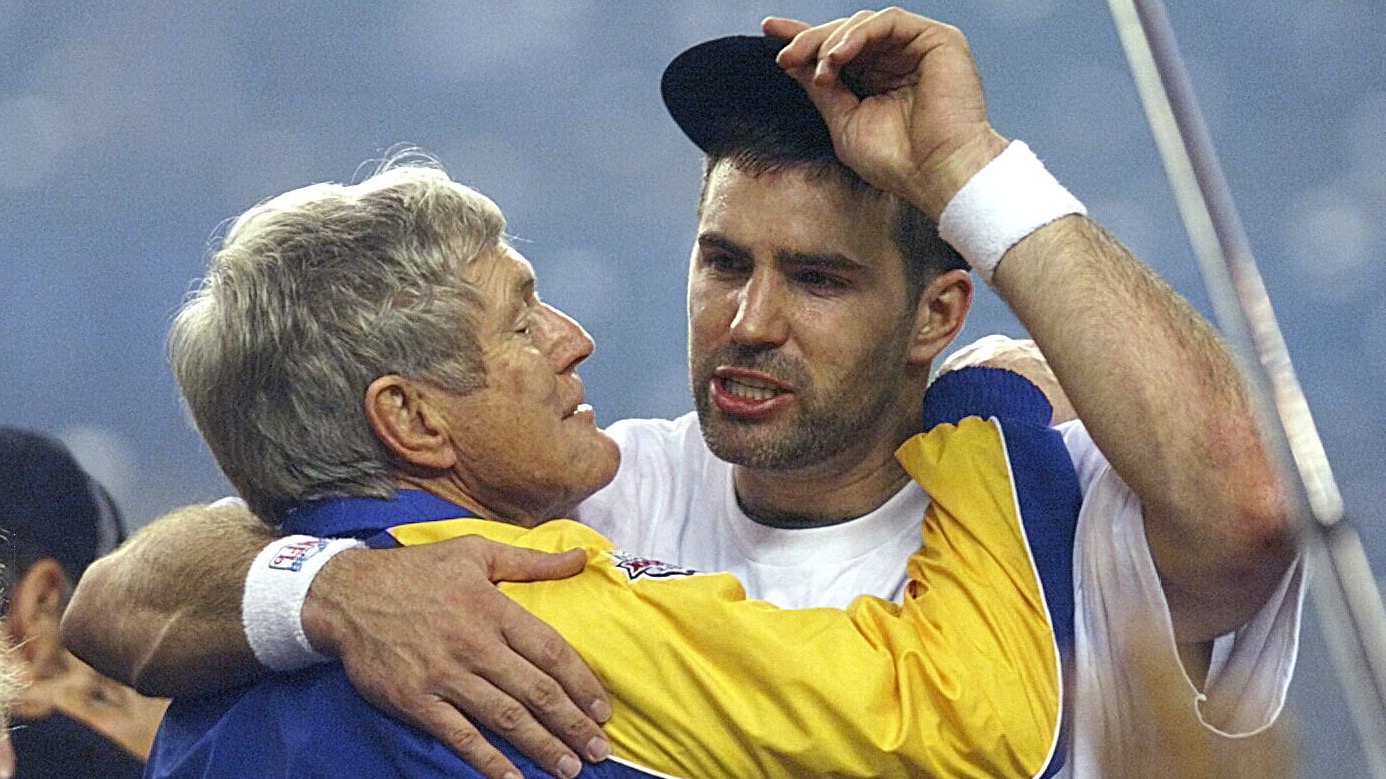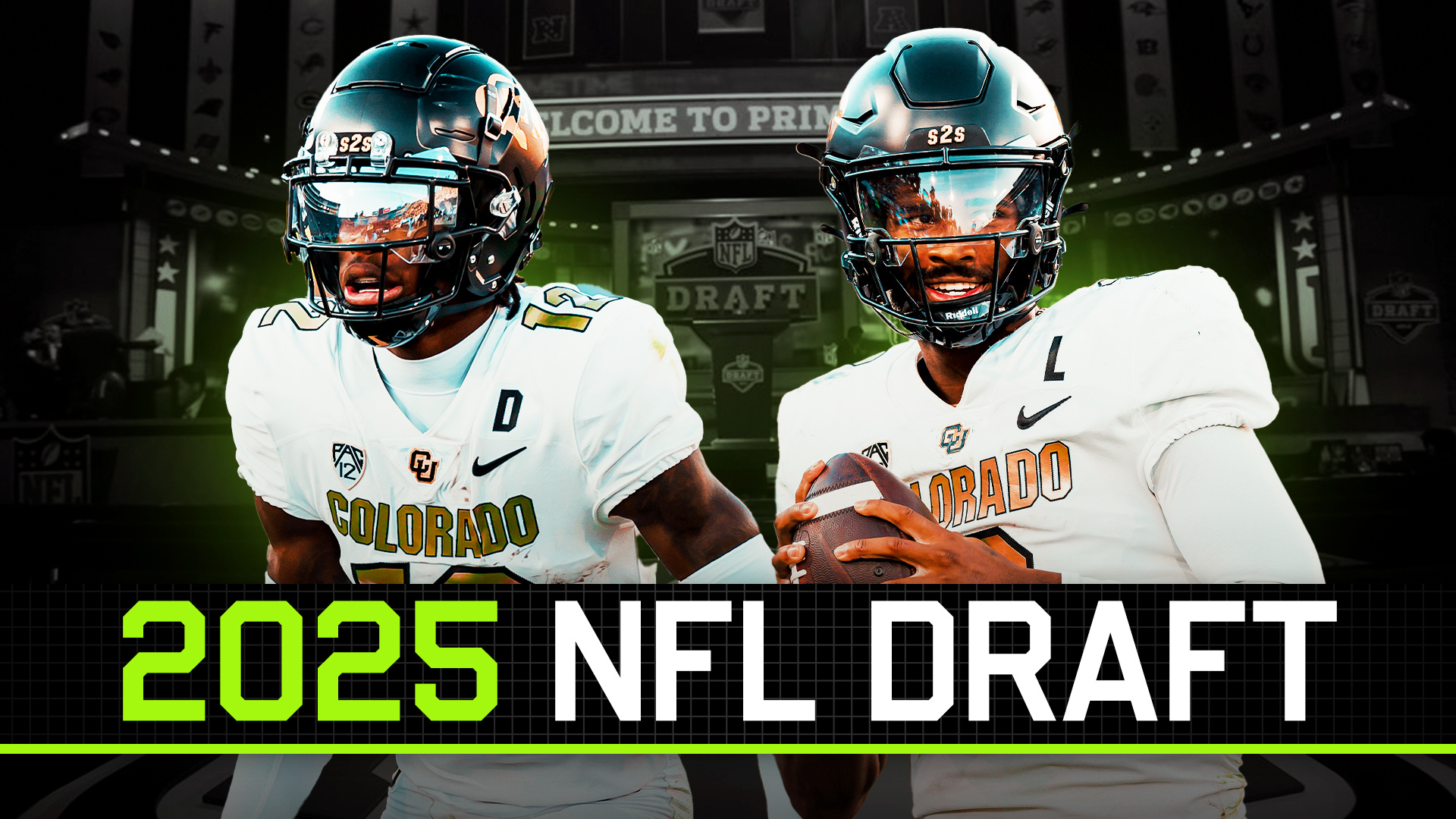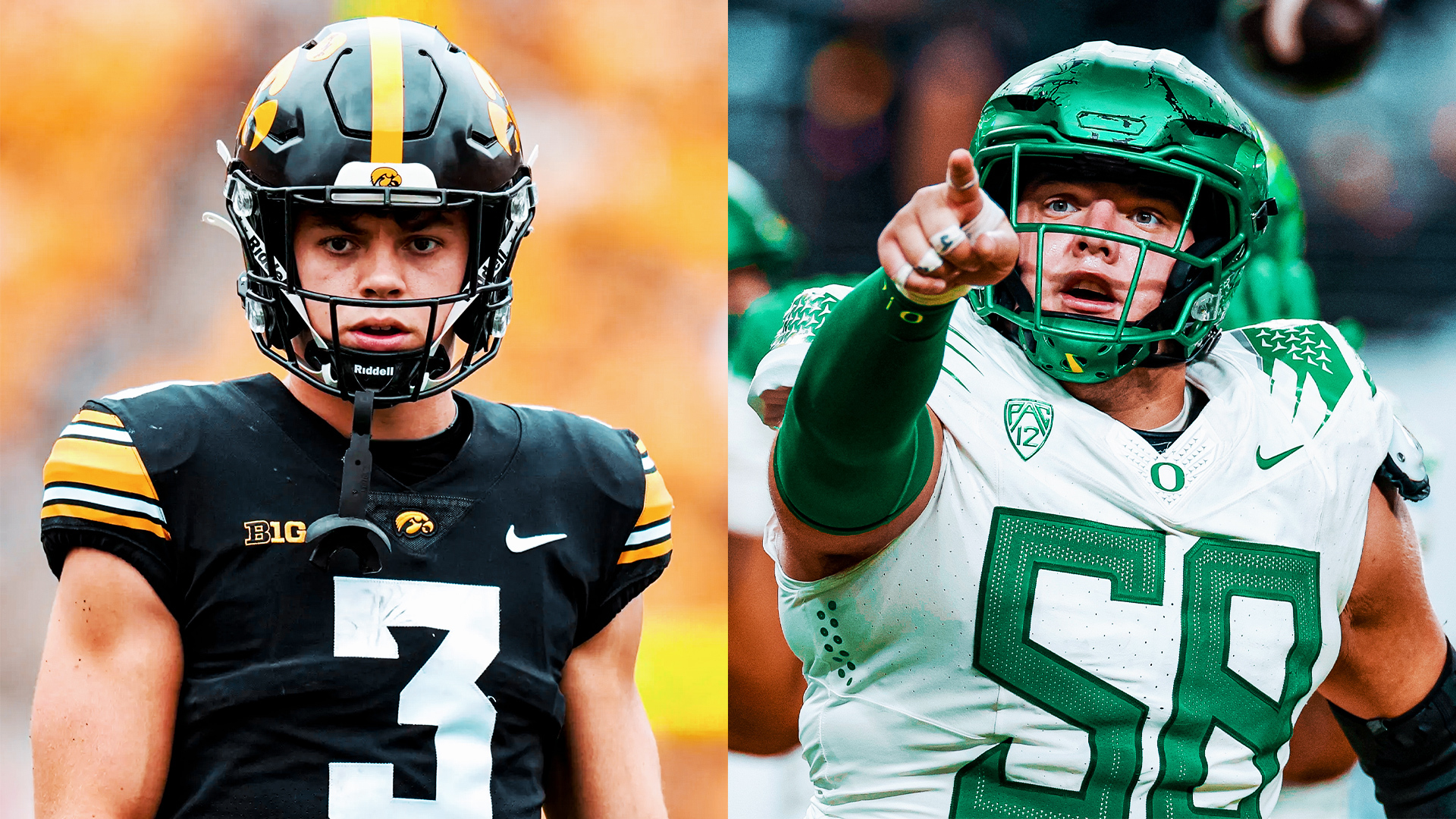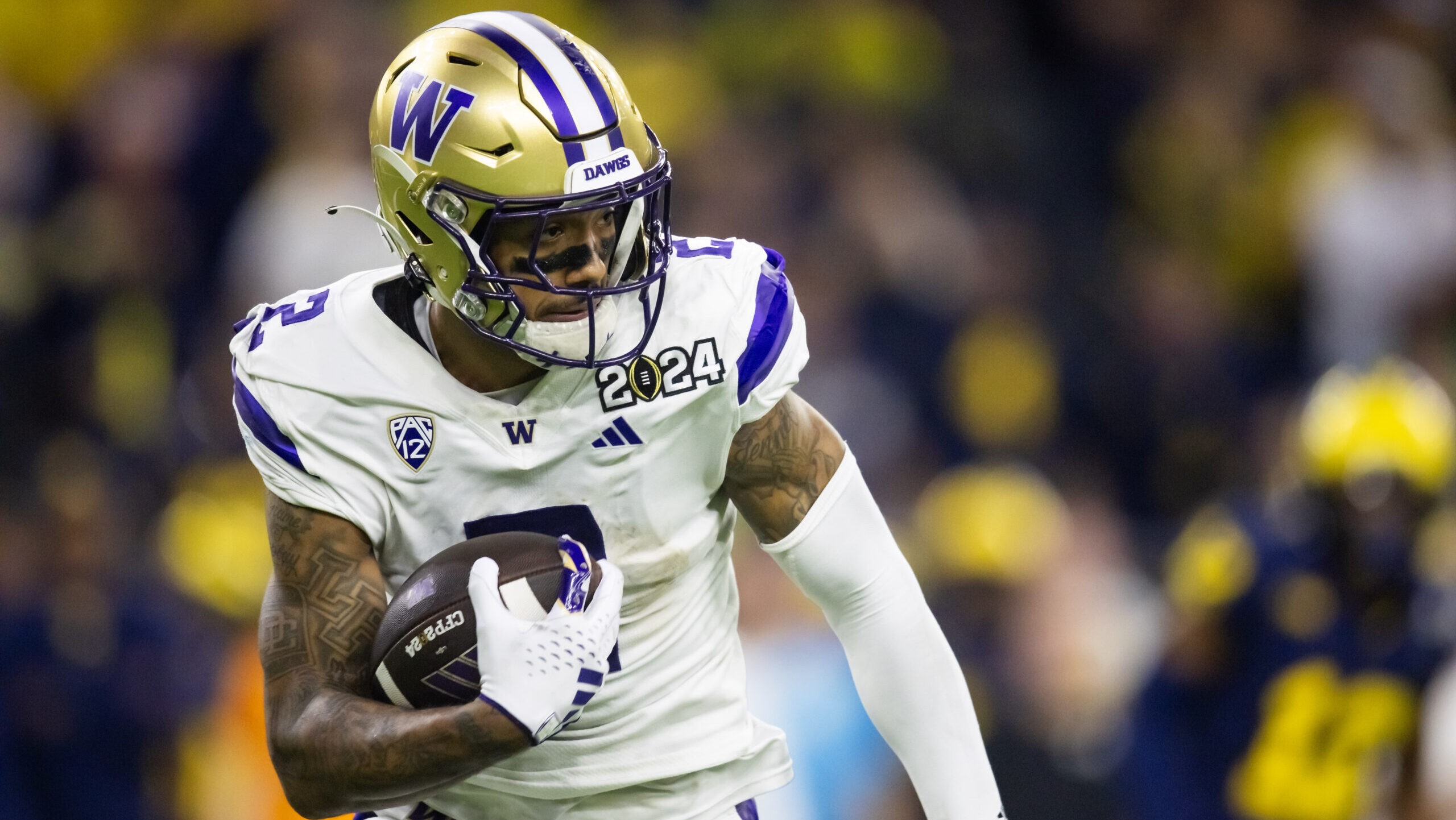Analysis
9/15/23
24 min read
2023 NFL Week 2: Matchups To Watch, Previewing Every Game
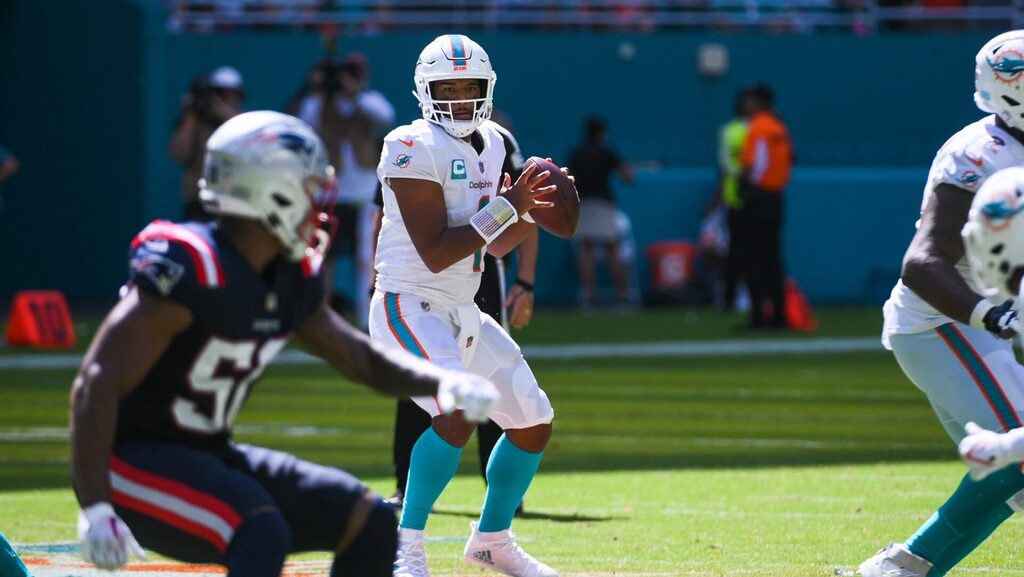
Andy Benoit and Cody Swartz provide insight into the Sunday and Monday games for Week 2 of the 2023 NFL season.
Sunday, 1 p.m. ET
 Baltimore Ravens at Cincinnati Bengals
Baltimore Ravens at Cincinnati Bengals 
Cody Swartz: With Odell Beckham Jr., Rashod Bateman and Zay Flowers, the Baltimore Ravens appear to now be an 11-personnel-based offense after using that league-wide most popular package last season on just 7.2 percent of normal first and second down snaps under previous offensive coordinator Greg Roman. Is this the right approach to take with Lamar Jackson?
Andy Benoit: The argument for this approach is: 11 personnel will mean more spacious formations, which gives a quarterback more room to see things or scramble. It also puts more speed on the field. All seem like great benefits for the uniquely explosive Jackson.
The argument against going 11 is: You have few run blockers, which means there are fewer run designs available. You also get more nickel defense, which, even on normal first- and second-down scenarios, can mean more disguises (and more designer pressure on second-and-long). Jackson is the greatest running quarterback since Michael Vick, and Jackson was playing in the NFL’s most schematically creative ground game. It’s a gamble to change this offense.
The evidence suggests an uphill battle. Entering this season, during the past three years in 11 personnel on first- and second-down snaps, Jackson’s 7.4 yards per attempt ranked 22nd among quarterbacks with at least 100 attempts. His 86.4 passer rating ranked 21st.
Swartz: How can Baltimore expect to cover WRs Ja’Marr Chase and Tee Higgins with current CBs Ronald Darby and Brandon Stephens?
Benoit: It’s a challenge, indeed. One thing second-year defensive coordinator Mike Macdonald has done is employ more split-safety looks — especially before the snap. Except for when the Cincinnati Bengals go spread empty (which they did more than all but four or five teams’ offenses last season), expect Macdonald in longer-yardage situations to stay in those split-safety looks after the snap a little more often — especially given that in three games against Cincinnati last year, Macdonald brought pressure nearly 50 percent less often than he did against the rest of the league.
 Green Bay Packers at Atlanta Falcons
Green Bay Packers at Atlanta Falcons 
Swartz: What’s the best way the Green Bay Packers can defend Atlanta Falcons TE Kyle Pitts? Using Eric Stokes? Darnell Savage? Keisean Nixon?
Benoit: The downside of Green Bay’s Vic Fangio–style system has been that the defense cannot control the matchups. Every defensive back aligns in the same location almost every play. The defense should look the same every snap and force the quarterback to identify the coverage after the snap.
However, Green Bay appears to have tweaked its system here. Last week, Jaire Alexander traveled outside with Chicago Bears No. 1 receiver DJ Moore. This means the defense does NOT necessarily look the same before every snap.
But coordinator Joe Barry is betting that this will be a minimal trade-off with a better return: the league’s highest-paid corner getting more snaps against the opponent’s best receiver.
To answer your Pitts question, he’s a hard one to match up against because he can align at a natural tight end location. My guess is Green Bay will put Rasul Douglas on Pitts’ side because Douglas has more size and physicality than Alexander.
Swartz: There’s very limited game film on Jordan Love. What will Saints DC Ryan Nielsen do?
Benoit: The challenge with there being little film on Love is twofold. One: You don’t fully know Love’s strengths, weaknesses and tendencies. Two: You don’t know what coach Matt LaFleur will call with Love. In these scenarios, a defense often reduces its playbook to its core concepts to emphasize fast, sound execution. Because otherwise, you get the opposite of that when you get cute making guesses about your opponent.
 Las Vegas Raiders at Buffalo Bills
Las Vegas Raiders at Buffalo Bills 
Swartz: What’s the best strategy to stop the highly effective Josh Allen scramble?
Benoit: Zone coverage is an inherent solution, but tread lightly there because Allen, in passing situations last season, was by far the best quarterback against zone coverage. The average third-down conversion rate against zone last season was 37.2 percent. The Buffalo Bills were a league-best 57.5 percent (second-best was San Francisco, at 47.6 percent).
Spying the quarterback allows you to be more aggressive with man and match coverages. Last season, Las Vegas Raiders DC Patrick Graham spied quarterbacks such as Patrick Mahomes, Geno Smith and even Kenny Pickett. Mahomes gets spied often.
Spying Smith and Pickett might surprise people, but while those quarterbacks are not Justin Fields–type scramblers, both have enough mobility to extend plays. That brings us to the unheralded benefit of spying: The spy doesn’t just discourage scrambles; he can also transform into a pass rusher when a quarterback gets outside the pocket.
Swartz: Would you have paid Josh Jacobs?
Benoit: Games like this one are why the Raiders paid Jacobs. He can help keep Allen and Buffalo’s deep four-man pass rush (somewhat) out of the equation.
If I were the Raiders, I would have paid Jacobs because my offense is built on strong-side runs out of two-back sets. That’s about as straightforward as it gets, which means you’re putting a premium on execution. And from a pure running standpoint, no one executes better than Jacobs.
He has light feet and is strong on contract. He’s patient. His lateral agility is dynamic, and he can both accelerate and re-accelerate. He thrives in confined areas and can also create his own space. He can change directions. He’s also a strong finisher.
Coach Josh McDaniels deployed a lot of classic two-back runs when he was in New England. Last season, Jacobs averaged about a full yard more per carry than McDaniels’ Patriots backs had.
 Chicago Bears at Tampa Bay Buccaneers
Chicago Bears at Tampa Bay Buccaneers 
Swartz: What’s Antoine Winfield Jr.'s best role on defense? Is it as a free safety, box safety or slot corner?
Benoit: The Tampa Bay Buccaneers plan on moving Winfield back to safety in 2023. They mostly did that against Minnesota; we’ll see if that holds. It raises a fascinating discussion. The Los Angeles Rams learned that Jalen Ramsey was, incredibly, an even better football player than a cornerback, and that’s the same with Winfield. Where you play him comes down to a variety of philosophical questions:
- What is the most valuable position in your scheme? (With an aggressive, disguise-heavy system such as Todd Bowles’, this discussion can go in many directions.)
- How important is continuity? Do we want Winfield playing the same spot every week and being great at it, or do we move him around based on the opponent, such as what the Los Angeles Chargers do with Derwin James? If we do that, our other defensive backs must be versatile, as well, because when Winfield moves, so does someone else.
- Could we play him at different spots in different packages, as the Rams did with Ramsey? (In dime, Ramsey played boundary corner. In 5-1 nickel — aka penny — he played the slot, etc.)
- If we move Winfield around, is it best to move him in a way that maximizes his skill set? The knee-jerk reaction is probably “Yes, of course.” But what if one of our five defensive back positions is the weakest and we could remedy that by putting Winfield there? Do we use the versatile star to maximize our strengths or minimize our weaknesses?
The Buccaneers are a veteran defense with a core that’s been together a long time. Most likely, the team has options with Winfield if it so chooses to use them. Chicago would be a good offense to move players around against, given that its quarterback is still in the developmental phases of reading defenses.
Swartz: How can Baker Mayfield attack Chicago’s Cover 2 defense?
Benoit: Route combinations that high-low the flat corner outside are the most common way to attack Cover 2, and Mayfield has never been shy about attempting those throws. But be careful about assuming Chicago will run Cover 2.
Yes, the Bears played it more than every defense except Houston’s last season. But that was still only a quarter of Chicago’s snaps. When Matt Eberflus was the defensive coordinator in Indianapolis, the Colts gradually expanded their straightforward zone scheme to include a diverse medley of fire zones and designer pressures.
The Bears have a strong secondary and a relatively weak four-man rush, plus they spent big money on linebackers who can run (the ever-ascending T.J. Edwards and, especially, ex-Bill Tremaine Edmunds). Don’t be surprised if Chicago brings fifth and sixth pass rushers and hopes its back-seven defenders can handle 1-on-1 matchups in space.
 Seattle Seahawks at Detroit Lions
Seattle Seahawks at Detroit Lions 
Swartz: What do you think of the Detroit Lions’ rookie offensive weapons?
Benoit: It’s easy to see why they took first-round running back Jahmyr Gibbs. Defenses will hold their breaths about the 10-12 touches he gets each game. But the guy who stood out in Week 1 was second-round TE Sam LaPorta. He was fluid as a receiver and notably competitive as a blocker, in-line at the point of attack and on the move. And just as importantly, he was an extremely movable chess piece for coordinator Ben Johnson.
All game against the Kansas City Chiefs, the Lions split their tight end out wide only to motion him back into the formation. They do that to get man-zone tells from the defense. You don’t need a stud tight end to make that work, but having one will enable the Lions to naturally take that next step — by using LaPorta on motion later in the pre-snap phase or sneaking him into favorable matchups by motioning the guys around him. Few teams are better than the Lions when deploying pre-snap motion. Gibbs and LaPorta especially only enhance that.
Swartz: Can the Seattle Seahawks trust either offensive tackle in 1-on-1 matchups vs. Aidan Hutchinson?
Benoit: Hutchinson jumped off the film against Kansas City. He plays long, he’s twitchy and he has a motor. In passing situations, he consistently moved inside to defensive tackle, where he was dominant. Given that Detroit really only has one true edge bender (James Houston), the Lions are presumably playing Hutchinson inside because that’s where they think he’s at his best rushing the passer.
 Indianapolis Colts at Houston Texans
Indianapolis Colts at Houston Texans 
Swartz: Cover 3 is declining from its Seahawks-driven heyday, but one of its modern godfathers, Indianapolis Colts DC Gus Bradley, still plays more of it than anyone. How should Colts fans feel about that?
Benoit: There will always be one team that plays more Cover 3 than the other 31. It makes sense that it would be the defensive coach who knows it best. Yes, Bradley, though more diverse and creative than he gets credit for, can be a touch predictable. But he knows and relishes this defense because it also makes the offense predictable.
Every week, the Colts can expect to see the same handful of football's best Cover 3–beating play designs. They’ve practiced against those designs and have doctored their system to handle them. Against a rookie quarterback making his second start and still looking for his first NFL touchdown pass, the Colts can expect more than ever to see some of the most basic, familiar Cover 3 beater tactics Sunday.
Swartz: There’s very little NFL game film on Anthony Richardson. Should the Houston Texans blitz him and risk the dangerous scrambling ability or force him to be a dropback passer?
Benoit: I’ve always believed that against young quarterbacks, you drop back and play zone coverage. Blitzing only bails them out because it puts fewer bodies in coverage, which gives the quarterback easier reads. Blitzes can break down the play, which works for a guy like Richardson’s athletic instinct. Sit back in zone coverage, make Richardson read multiple defenders and execute consistently.
 Kansas City Chiefs at Jacksonville Jaguars
Kansas City Chiefs at Jacksonville Jaguars 
Swartz: What’s Kansas City’s plan for its cornerback matchup vs. WRs Christian Kirk and Calvin Ridley?
Benoit: I’m eager to see how this plays out. The Kansas City Chiefs have perhaps the NFL’s most underrated star corner in L’Jarius Sneed. In the playoffs last season, because Jacksonville’s passing game so often attacks inside, the Chiefs put Sneed in the slot.
But last week against Detroit, Sneed simply played left corner. In run situations, fourth-round rookie Chamarri Conner played the slot. In pass situations, rising second-year star Trent McDuffie slid inside and second-year man Joshua Williams came in at right corner. Whether Kansas City will deploy this approach in Week 2 is anyone's guess. The Lions had no clear No. 1 outside receiver. The Jacksonville Jaguars do in Ridley. Kansas City has a ton of talent and versatility at corner.
Swartz: Last year, Jacksonville played base vs. Kansas City’s 12 and 13 personnel. If TE Travis Kelce plays but is hobbled, does that change anything? Do you expect this to be Jacksonville’s approach again?
Benoit: Kelce’s status affects how defenses go about defending Kansas City’s multi–tight end packages (which, by the way, because of Kelce’s receiving prowess, the Chiefs deployed on 38 percent of their snaps last year, second behind only Seattle).
NFL defenses played nickel against 12 and 13 personnel on about 41 percent of snaps last season. But Kansas City faced nickel 63 percent of the time. Jacksonville was one of the few teams that did NOT do it, presumably because it has two linebackers in Devin Lloyd and Foyesade Oluokun, who each run well. If the Jaguars played base against Kansas City’s 12 and 13 last season, it’s reasonable to assume they’d do it again this season.
 Los Angeles Chargers at Tennessee Titans
Los Angeles Chargers at Tennessee Titans 
Swartz: The Tennessee Titans allowed the third-most 15-plus-yard passes last season. Justin Herbert has a cannon of an arm and a new offensive coordinator who will call deep passes. How can Tennessee slow Herbert down?
Benoit: Winning up front is key – obviously. The Titans are not a big blitzing defense, but they are big on coverage disguises and simulated pressures, with second-level defenders rushing and first-level defenders dropping. Both can help compel a quarterback to hold the ball.
The Los Angeles Chargers have a fairly high-pedigreed offensive line. Entering the season, I was not as high on the unit as others. RT Trey Pipkins can play a bit stiff and upright, LG Zion Johnson ran hot and cold as a first-round rookie and RG Jamaree Salyer is relatively new to the position. However, all those players, plus LT Rashawn Slater and C Corey Linsley, mostly played well against the Miami Dolphins. (Aside from the sack by Zach Sieler, the quarterback hits/sacks at the end were schemed rushes by Miami, not pass-blocking breakdowns.)
Tennessee has the weapons to attack the Chargers’ blockers. Harold Landry played off the defensive left edge on 45 percent of his snaps in 2021 (when he was last healthy). Don’t be surprised if that number rises to 60 or 65 percent against the Chargers, so Pipkins will have to deal with Landry’s leverage and bend.
Inside, Jeffery Simmons is one of the few pass rushers who truly has the strength to wear blockers down over the course of the snap. Denico Autry is one of the best-schemed rushers in the game with his position flexibility and adeptness at setting up others on stunts. Arden Key, an exceptionally effective schemed rusher in San Francisco and Jacksonville, perfectly fits Tennessee’s long-looping style of stunts. With the Chargers having a deeper dropback game, Tennessee, with its disguises on the back end, will have time to stress the Chargers’ guards with these multifaceted stunts.
Swartz: Should Chargers' CB J.C. Jackson be benched?
Benoit: He was benched down the stretch against Miami, and understandably so. His defensive pass interference at the end of the half was probably one of the 50 worst individual plays in cornerback history. He was beaten 1-on-1 on other snaps (including soundly by Tyreek Hill for a 35-yard touchdown). These problems — mistakes and 1-on-1 losses — were prevalent with Jackson last season, as well, and the Chargers' defense got better when Michael Davis came in after Jackson’s unfortunate knee injury.
It’s impossible to answer whether Jackson’s benching should carry into this week without being in the Chargers’ building. Most likely, entering Week 1, they wanted to get their three most talented corners all on the field. That meant Jackson at boundary corner, Davis at field corner and Asante Samuel Jr. in the slot.
But if Ja’Sir Taylor replaces Jackson again, Taylor will take the slot, which moves Samuel Jr. to field corner (where he’s far more experienced) and Davis to boundary corner (where his bigger frame is far better suited). Given this, even if Jackson is the Chargers’ third-best corner ahead of Taylor, the secondary as a whole might be better with Taylor instead of Jackson.
Sunday, 4 p.m. ET
 New York Giants at Arizona Cardinals
New York Giants at Arizona Cardinals 
Swartz: Jonathan Gannon famously didn’t blitz with the Philadelphia Eagles — because he didn’t have to. Will he blitz against the New York Giants?
Benoit: Thank you for wording this question appropriately. It boggles my mind that Philadelphia fans griped about Gannon not blitzing when he possibly had the best four-man rush of anyone in the last decade. From an Xs and Os standpoint, saying he should have blitzed more is simply stupid. Especially when you consider that the Eagles’ scheme was predicated on presenting split safety looks.
But now... Gannon has possibly the least potent four-man rush. So yes, he and defensive play caller Nick Rallis will dial up designer pressure because that’s their best chance to get home. However, they blitzed on about one in five snaps against the Washington Commanders, which may point to the other (difficult) part of this equation for the Arizona Cardinals: Do they have defensive backs who can cover 1-on-1 in space?
Swartz: How are the Cardinals supposed to manufacture an offense with Josh Dobbs at quarterback?
Benoit: Full disclosure: I have not seen the Arizona-Washington film, and Dobbs is still largely a mystery. So, instead of rambling on with tropes and qualifiers, I’ll just take the L on this one and move to the next question.
That way, you can trust the veracity of the other 4,400 words written here.
 New York Jets at Dallas Cowboys
New York Jets at Dallas Cowboys 
Swartz: Can Sauce Gardner take CeeDee Lamb out of the game?
Benoit: I know you’re taking one for the team here by asking something you already know the answer to — and thank you because, yes, this is a perfect opportunity to clarify how the New York Jets use Gardner, their second-year superstar corner. The answer to your question: No, Gardner cannot take Lamb out of the game. Why? Because it’s not up to Gardner. He plays left corner on almost every snap (98 percent of the time, to be exact). He’ll guard Lamb when Lamb aligns as the widest receiver to the right. Last week, that was three times out of 46 snaps; Lamb’s primary role is the slot.
Swartz: What will be Zach Wilson’s biggest challenge this week?
Benoit: It will be the Dallas Cowboys lining up in man coverage looks but dropping to Cover 2. Defensive coordinator Dan Quinn does that as much as — if not more than — any defensive play caller, and it’d be a great way to get Wilson playing tentatively early in the game.
 Washington Commanders at Denver Broncos
Washington Commanders at Denver Broncos 
Swartz: Who is Washington’s most valuable defensive lineman?
Benoit: That’s a great question with possibly no wrong answers. Daron Payne has sheer athletic power, and Montez Sweat uses his length exceptionally well. Chase Young (if healthy, of course) was the No. 2 overall pick for a reason. But the guy I’d anoint is defensive tackle Jonathan Allen. He has strong, violent hands amplified by savvy mechanics and is quicker than his body type should allow.
Swartz: Will Patrick Surtain II travel with Terry McLaurin?
Benoit: Surtain traveled outside with Davante Adams last week (and inside if it was man coverage), so presumably, Surtain will do the same with McLaurin this week. That’s also how new Denver Broncos DC Vance Joseph used Patrick Peterson in Peterson’s heyday. If the Commanders want to shake this matchup, they’ll have to put McLaurin in the slot or motion him across the formation (and hope Denver is in a zone coverage).
 San Francisco 49ers at Los Angeles Rams
San Francisco 49ers at Los Angeles Rams 
Swartz: What’s the San Francisco 49ers’ approach with Los Angeles Rams WR Puka Nacua after his unexpected Week 1 breakout?
Benoit: It will be almost certainly the same approach as it would have been if Nacua had not broken out. You might change your profile and have left corner Charvarius Ward travel with certain star receivers in certain offenses (like the 49ers did last year). Still, you don’t do that for a guy who has played one game, especially not after your defense was lights out against a pretty decent Pittsburgh Steelers receiving corps.
Swartz: Spencer Burford committed three penalties and was charged with allowing numerous pressures in Week 1. How can Kyle Shanahan keep Aaron Donald from wrecking the game?
Benoit: Tread lightly with “pressure” stats because those can be highly subjective and, on some snaps, even outright erroneous if we don’t know the protection call. But I understand the question. And because we’re talking about Donald and an otherwise little-known Rams pass rush, the answer would be the same whether it was Burford at right guard or, say, Zack Martin: The protection will slide to Donald, and it’s just a matter of whether the offense also wants to put running back help over there. (Most likely, the 49ers will not, as they use a lot of scat protections to put the back out in a route).
From the Rams’ standpoint, keep in mind that they know with certainty that the protection will slide to Donald. So will they bring blitzers and stunters from the other side?
Sunday Night Football
 Miami Dolphins at New England Patriots
Miami Dolphins at New England Patriots 
Swartz: How is a defense supposed to stop Hill and Jaylen Waddle?
Benoit: I wondered that myself while watching the Dolphins-Chargers film. The Chargers contained those guys last year by unexpectedly playing press coverage. This year, the press coverage was expected, and it did nothing to slow those two down. The Chargers’ corners were pressing but were still unable to get their hands on the receivers, even though they often had safety help over the top.
The Patriots deploy physical man coverage as much as any defense, but we also know they’ll surprise with unexpected game plans from time to time. Could this be one of those occasions? Would Bill Belichick have his men play off and force Miami to dink and dunk? Would off-coverage be enough to combat Waddle and Hill’s speed?
Swartz: Vic Fangio is a modern-day defensive legend. Belichick is an all-time legend. What can we expect from Fangio?
Benoit: Let’s remember that at the core of this chess match will be Fangio vs. Patriots OC Bill O’Brien — but I see your point. Fangio’s scheme has a very specific blueprint, so don’t expect unpredictability. Instead, expect blurriness. Fangio deploys his safeties and linebackers in subtly staggered, meandering alignments that make it difficult to tell (especially pre-snap and early in the down) just what you’re getting. He’ll challenge Mac Jones with that, almost certainly in the form of zone coverage (where, last season, Jones was far less effective in obvious pass situations).
Monday Night Football
 New Orleans Saints at Carolina Panthers
New Orleans Saints at Carolina Panthers 
Swartz: Does New Orleans Saints coach Dennis Allen stick with a traditional rush-four approach vs. Bryce Young or does Allen send multiple blitzes?
Benoit: Allen’s M.O. has always been to shuffle from one traditional coverage to another, snap after snap, changing up looks steadily. That seems like a perfect formula for a quarterback like Young entering his second NFL game.
Swartz: Will Ejiro Evero remain a blitz-heavy defensive coordinator with the Carolina Panthers? Last season, Derek Carr was 27th in passer rating vs. blitz.
Benoit: We don’t think of Evero as “blitz heavy” because he comes from the Fangio tree, but Evero’s version of the Fangio scheme has been extremely heavy in fire zones — not just the base ones where the five down-linemen all rush, but also the intricate ones with layered stunts and linebacker blitzes. Overall, Denver rushed five on 39 percent of its snaps under Evero last season — the fourth-most behind the Giants, Buccaneers and Cardinals.
Being consistent with linebackers’ alignment depth and locations is what makes this go. Evero made this work in Denver with good-but-not-great athletes such as Josey Jewell and Alex Singleton. Now, Evero has two dynamic pieces in Frankie Luvu and Shaq Thompson.
 Cleveland Browns at Pittsburgh Steelers
Cleveland Browns at Pittsburgh Steelers 
Swartz: S Minkah Fitzpatrick played in the slot or the box on 34 snaps in Week 1. Will that be his role for the Steelers moving forward?
Benoit: On normal down and distance situations (i.e., first-and-10 and second-and-7(ish)-or-less), it will be. Fitzpatrick will continue to play safety in pass situations, and former Packer/Viking Chandon Sullivan will be the primary slot defender. What was also interesting last week is that in man-rover coverages, Fitzpatrick did NOT play the rover role, even though he is arguably the league’s best at it (Kevin Byard would be the counter-argument).
Instead, Fitzpatrick matched up to tight end George Kittle. Will that be the blueprint for every week? SS Keanu Neal has experience as a man-match defender on tight ends, though he’s not in Fitzpatrick’s class athletically. A genuine question: If there’s an average tight end (instead of a star such as George Kittle), would the Steelers view the rover position as more important than the tight end man-match role and play Fitzpatrick there?
Swartz: Was Myles Garrett aligning inside in Week 1 a trend? How can Pittsburgh prepare for this?
Benoit: The Cleveland Browns used Garrett in a joker/spinner-type role on four snaps against Cincinnati, including the viral snap of him dancing back and forth on either side of the center. The Texans used to do this with Jadeveon Clowney.
The Steelers have done it often with T.J. Watt. Garrett’s current teammate, Za’Darius Smith, has been one of the best at this role over the years (and indeed got four snaps of it himself vs. Cincinnati). Pittsburgh can expect to see it Sunday if for no other reason than the fact that its weak spots up front against San Francisco were C Mason Cole and, especially, RG James Daniels. Both had their hands full with San Francisco’s highly potent layered stunts.
Andy Benoit worked for Sean McVay and the Los Angeles Rams coaching staff from 2020 through 2022. Before that, he was a football analyst, writer and content producer for Peter King’s MMQB at Sports Illustrated, as well as at CBS Sports and The New York Times. You can follow him on Twitter @Andy_Benoit.


